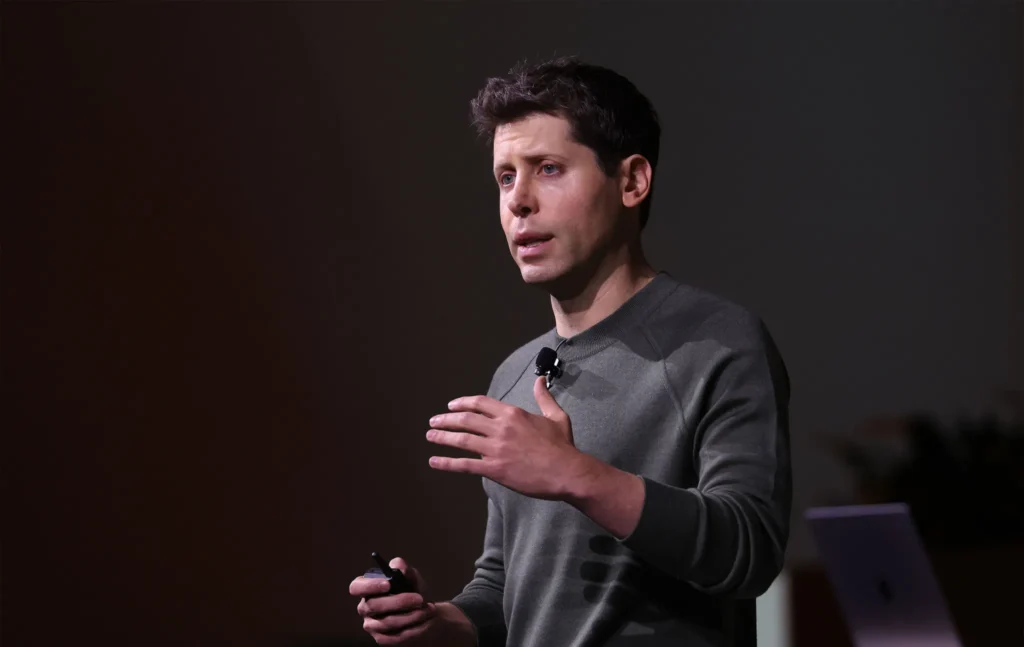GPT-5 Launch marks a revolutionary step in AI as OpenAI unveils a model designed to transform how businesses, creators, and people interact with artificial intelligence. When Sam Altman walked onstage at OpenAI’s San Francisco event on August 7, the room already buzzed with expectation. What followed was a deliberate, measured reveal of GPT‑5 — a model that, by design and ambition, aims to reshape how businesses, creators, and people work with artificial intelligence. This is a first‑hand look at what GPT‑5 does differently, why it matters, and what the cautious optimists and sceptics are saying.
Quick summary — what you need to know
OpenAI released GPT‑5 on August 7, 2025. The model emphasizes multi‑modal reasoning, an extended context window, reduced hallucinations, and a routing system that balances speed with deeper thinking. Access is tiered across free, Pro, and Enterprise plans.
- Launch date: August 7, 2025
- Key strengths: Multi‑modal input, long context, improved reasoning, API control
- Access: Free tier (limited), Pro (priority), Enterprise (custom)
- Primary risks: misinformation risk, persistent memory concerns, regulatory scrutiny
A reporter’s view from the GPT-5 launch
The demo wasn’t flashy. OpenAI chose substance over spectacle: a 10‑minute walkthrough that showed GPT‑5 parsing multi‑page documents, explaining charts, and answering complex follow‑ups without losing track. Attendees — a mix of researchers, product leads, and journalists — leaned forward as the system moved from quick answers to a slower “reasoning” mode for complex queries.
“We built GPT‑5 to think when the problem requires it, and to respond quickly when that suffices,” Altman said onstage. “It’s a practical step toward tools that can help solve real problems.”
That balance — speed versus depth — is central to the product. OpenAI described a routing mechanism that selects the appropriate computation path depending on the prompt and desired output complexity. In practice, this is the difference between a snappy reply that answers a headline question and a more deliberate chain of thought that unpacks a legal brief or a technical paper.

What’s new: five features that matter
1. Long, coherent memory: up to 256K tokens
GPT‑5’s extended context feels less like a conversation and more like an ongoing project workspace. You can feed large documents — an entire report, codebase snippets, and a set of customer messages — and the model retains structure across the session. For workflows that need continuity (e.g., drafting a multi‑chapter report or reviewing a lengthy contract), this is transformative.
2. Native multi‑modal reasoning
Past models could accept images or text, but GPT‑5 treats them as one coherent input. Upload a diagram and a paragraph of notes, ask for implications, and receive an answer that weaves both sources together. The demos showed the model reconciling chart anomalies with the written conclusions — a task that previously required manual cross‑checking.
3. The Reasoning Core and reduced hallucinations
OpenAI highlighted better factuality. The model signals uncertainty more often and employs internal checks before asserting answers. That doesn’t make it infallible, but it improves trustworthiness for professional tasks — the kind of queries where a mistaken fact can be costly.
4. Actionable API: tools and integrations
Developers can now give the model controlled access to external APIs (with user consent) so it can fetch live data, open documents, or run authorized workflows. Think of an AI that can read your calendar, draft an email, pull in a stock quote, and propose next steps — all while respecting scopes and permissions.
5. Persistent, user‑controlled memory
Instead of passive session memory, GPT‑5 supports persistent profiles that remember user preferences, saving time on repeated context. Critically, OpenAI emphasized user control: you can view, edit, or delete what the model remembers.
Under the hood — a simpler explanation
GPT‑5 builds on Transformers but layers in efficiency and routing. A Sparse Mixture‑of‑Experts (MoE) design allows the system to activate only parts of the model needed for a task, saving computation. Dynamic attention prioritizes the most relevant passages in long documents. Combined with a staged training regimen and extra human review, the design aims to make GPT‑5 both capable and cost‑sensible.
Real use cases that stood out at the demo
The team showed several concrete scenarios:
- Legal analysis: Summarizing a 120‑page contract and flagging high‑risk clauses.
- Healthcare notes: Extracting relevant patient history across multiple reports into a concise brief.
- Product design: Turning customer feedback and telemetry into prioritized feature recommendations.
These are not hypothetical: the demos were practical and framed around everyday workflows. That grounding suggests OpenAI is aiming at adoption in professional settings where accuracy and auditability are required.
Performance, benchmarks and limitations
OpenAI presented benchmark results showing gains over GPT‑4 in reasoning and multi‑modal tasks. But a skeptic in the audience asked the question everyone wanted answered: how much better is it on problems that matter? The short answer — better, but not perfect.
On complex math and code reasoning, GPT‑5 reduced notable error classes and handled multi‑step solutions more reliably. For factual tasks, the rate of confident but incorrect answers dropped, though occasional mistakes remained — especially on obscure facts and fringe knowledge.
Limitations include reliance on the quality of input documents, potential brittleness when prompts are adversarially structured, and the ongoing need for human oversight in high‑stakes domains.
Pricing and access strategy
OpenAI launched GPT‑5 with a tiered access model:
| Tier | Who it’s for | Key limits / benefits |
|---|---|---|
| Free | Casual users | Limited requests, fallback to smaller models under heavy load |
| Pro ($30/mo) | Power users, small teams | Priority access, larger context windows |
| Enterprise | Companies | Dedicated capacity, SLAs, custom integrations |
This structure makes adoption approachable for individuals while giving businesses a route to integrate the model reliably at scale.
Reactions — why the response is mixed
Conversations after the event split along familiar lines. Many product managers and developers praised the model’s practical integrations and API improvements. Several educators expressed optimism about personalized learning. Meanwhile, civil‑liberties groups flagged the dangers of persistent memory and deepfake generation.
Regulators and policy experts raised typical concerns: the need for audit trails, third‑party verification, and clear liability when models are used to make consequential decisions. Those conversations will shape how quickly certain industries deploy GPT‑5.
What companies should consider before integrating GPT‑5
- Define clear use cases: Start with bounded, observable tasks where errors are manageable.
- Establish human‑in‑the‑loop workflows: Use the model for drafts and suggestions rather than final decisions.
- Audit and logging: Keep a record of model inputs and outputs for compliance and debugging.
- Data governance: Decide whether to allow persistent memory and set retention policies.
- Fallback strategies: Have deterministic logic if the model is unavailable or produces uncertain outputs.
Ethics, safety and regulation
OpenAI said it invested heavily in red‑teaming and external audits. Yet the ethics debate is not solved: powerful multi‑modal systems lower the barrier for sophisticated misinformation and create new attack surfaces for fraud and impersonation.
Policymakers are calling for standardized reporting on model capabilities and harms, requirements for provenance metadata, and possibly new licensing regimes for certain high‑risk AI applications. The takeaway: rapid adoption will likely be accompanied by stricter oversight.
How GPT‑5 compares to competitive offerings
Competitors like Anthropic, Google DeepMind, and Meta have been iterating rapidly. GPT‑5’s edge lies less in a single metric and more in the combined package: developer tooling, multi‑modal fluency, and integrations that make the model useful for real workflows.
That said, the market remains competitive — enterprises will evaluate models not only on raw capability but on cost, privacy controls, and vendor relationships.
Practical tips for content teams and SEO
If you publish technology coverage, here are tactical tips when reporting on GPT‑5 (or any major AI release):
- Include precise dates and event details (publish date: Aug 7, 2025) to anchor your piece.
- Use keyword variants: “GPT-5 release”, “OpenAI GPT-5”, “GPT-5 features”.
- Add a clear lede and a TL;DR for skimmers.
- Provide examples or screenshots when possible and always add alt text to images.
- Link to primary sources such as OpenAI’s announcement and reputable news coverage.
Conclusion: cautious optimism
GPT‑5 is, unequivocally, a substantial step forward. It brings real capabilities that will be immediately useful in professional contexts, from legal review to product analytics. Yet every advance carries trade‑offs. As companies race to adopt, they must also build guardrails — both technical and organizational — to ensure that the technology amplifies human work without amplifying harm.
If you watched the launch, you likely left with two feelings: excitement at the new possibilities, and the sober awareness that powerful tools require deliberate stewardship. GPT‑5 gives us both the opportunity and the obligation to reshape systems responsibly.
Published August 8, 2025 — Your Site Name. For press inquiries, contact press@yourdomain.com.




